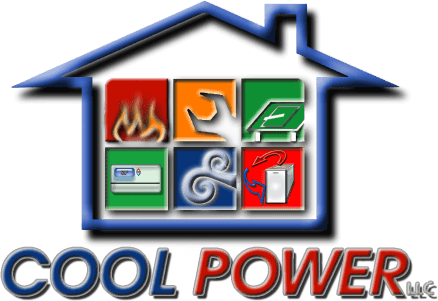Anyone who suffers from allergies knows how troublesome they can become, including severely limiting activities during major allergy attacks. This is why you’re willing to try just about anything to help reduce your body’s response to allergens and get a little relief. Consider why you should work to improve your indoor air quality, or IAQ, this allergy season and create an environment where you can breathe a little easier.
Change Your Air Filter
The very best thing you can do to help improve your IAQ and reduce the allergens in your air is to change your HVAC system’s air filter. This is an often neglected part of your HVAC maintenance but is critical to controlling allergens.
The more contaminants your filter collects, the less efficient it becomes, meaning that it doesn’t pull as much from the air. This is in large part due to the fact that as it gets full of contaminants, it doesn’t pass as much air through it. Less air moving through the filter means less air circulating and less air to have allergens removed.
Additionally, the more contaminants contained on your filter, the more likely some contaminants are going to get through your HVAC system via holes and leaks. This causes your system to circulate them back into the air for you to breathe.
Control Your Home’s Humidity
Humidity is undoubtedly a strong contributor to poor air quality, whether it’s too high or too low. The Environmental Protection Agency suggests the ideal humidity in your home is between 30% and 50% relative.
When you allow the humidity to climb beyond this level, it creates an environment that’s perfect to grow various biological contaminants, including many spores. These are often strong contributors to indoor allergic responses.
If you drive the humidity level down lower than 30%, then airborne particles are too light and will continue floating around. More contaminants in the air often mean more and stronger allergic responses.
The average humidity around Ronkonkoma is often around the 70% mark. This means that you may need to look at ways to help control your humidity levels. The best option for controlling the humidity throughout your home to provide unrestricted access to people with allergies is adding a whole-house dehumidifier. This gets added to your HVAC system and works on removing airborne moisture before circulating air moves through the furnace or evaporator coil.
Stick to a Cleaning Schedule
When humidity is properly controlled, airborne contaminants will fall from the air onto your floors and elevated flat surfaces. Additionally, allergens get tracked into your home on your clothes, shoes, and even on your pets.
Cleaning should include regular vacuuming and dusting. When the contaminants collect on your floors, they will get kicked up into the air again as you move throughout your home. The dust that’s collected on surfaces will slowly become airborne again as the air naturally circulates around your home. This cycle perpetuates poor air quality throughout your home.
The only way to truly improve the air quality is to fully remove the contaminants. Yes, your air filter will help remove some. However, to get much better air quality and reduce allergens in your home, you’ll need to clean to remove those that have settled. The more severe the allergies are in your home, the more frequently you should perform cleaning tasks. Make some of the cleaning easier with automated systems, like a robotic vacuum cleaner that moves about while everyone is away at work and school.
Have Your HVAC System Maintained Routinely
Along with changing your system’s air filter, routine maintenance is a non-negotiable when trying to control allergens in your home. Small particles flow through your filter and some may enter through leaks in the system. These settle further into the system, often on the heat exchanger, evaporator coil, and circulating fan wheel.
Part of routine maintenance is cleaning these areas to prevent any airflow restrictions. However, cleaning them also removes the contaminants so that the air cannot pick them back up and circulate them. You should have two different maintenance visits each year. One visit happens in the spring and focuses on the air conditioner. The other happens in the fall and focuses on your heating system.
Consider Adding an Air Purifier
You can also remove more contaminants from the air by adding more substantial filtration through an air purifier. These devices often have a combination of substantial filtering combined with technology that helps draw contaminants from the air.
For instance, when you install an air scrubber to your HVAC system, it’ll release negatively charged ions in the air circulating throughout your home. These ions act like magnets that attract airborne particles, causing them to stick together. They become heavy enough to drop from the air so that you can remove them when you clean.
Keep in mind that it’s not recommended to simply replace your current filter with a more efficient model. Most HVAC systems aren’t designed to use highly efficient filters, which can cause airflow restrictions that inhibit effective air movement and strain your system.
If you aren’t ready to add a whole-house air purifier, consider models that work at the room level. Just be careful that you get a model that’s appropriate for the room size to ensure you see the benefit.
Ensure You Have Proper Ventilation
Ventilation is often overlooked when discussing air quality solutions. Ventilation is simply the exchange of stale and contaminated air inside with fresh air from outside.
If you want the most current ventilation technology, consider installing an energy recovery ventilator, or ERV. These use two fans to move air from inside and draw in the fresh air. They also help reduce your energy loss by transferring thermal energy between the outgoing air and the incoming air.
During the winter, this means the outbound air is heating the incoming air. Over the summer, the outgoing air cools the incoming air, which also reduces the humidity to help control that more effectively.
Attend to Your Pet’s Hygiene Needs
Finally, if you have pets, make sure that you’re attending to their hygiene needs as well. Pet hair and dander are significant contributors to poor air quality around your home.
In addition to your regular cleaning routine, plan to have your pets groomed frequently. Whether you do this yourself or take them to a groomer, this should include both bathing and brushing to reduce what’s coming off them in your home. You may also want to consider wiping down their coat and feet when they first come in from an outside adventure to reduce transporting allergens inside.
People around Ronkonkoma who’ve needed to improve their indoor air quality have turned to Cool Power LLC for over 40 years. In addition to air quality services, our team is sought for superior heating and air conditioning installation, maintenance, and repairs. We provide installation financing for customers with approved credit and offer specials throughout the year to help customers save money. Call to schedule your AC maintenance appointment with one of our NATE-certified technicians today.


